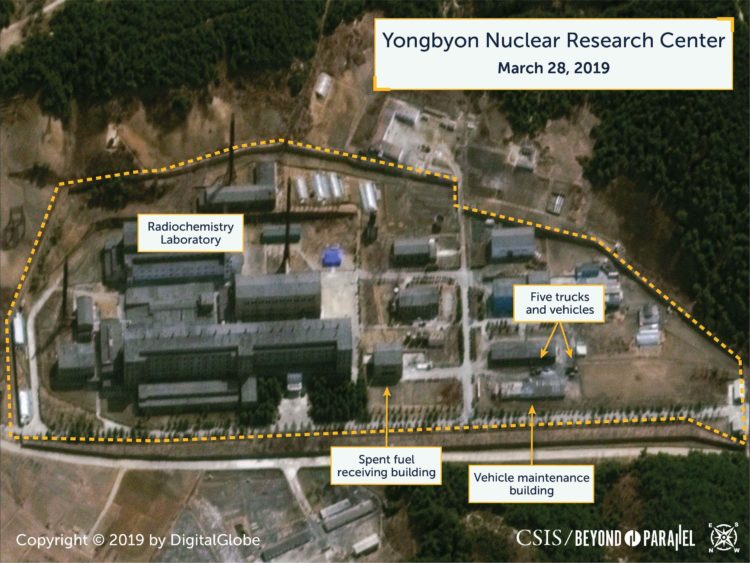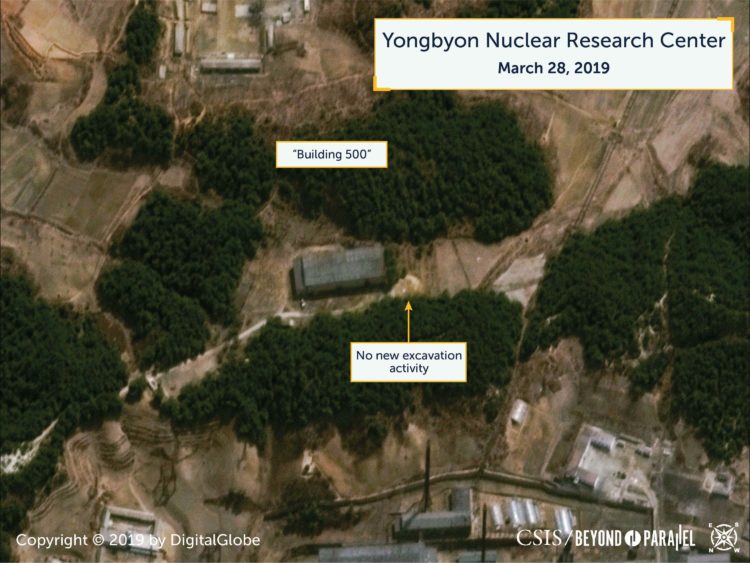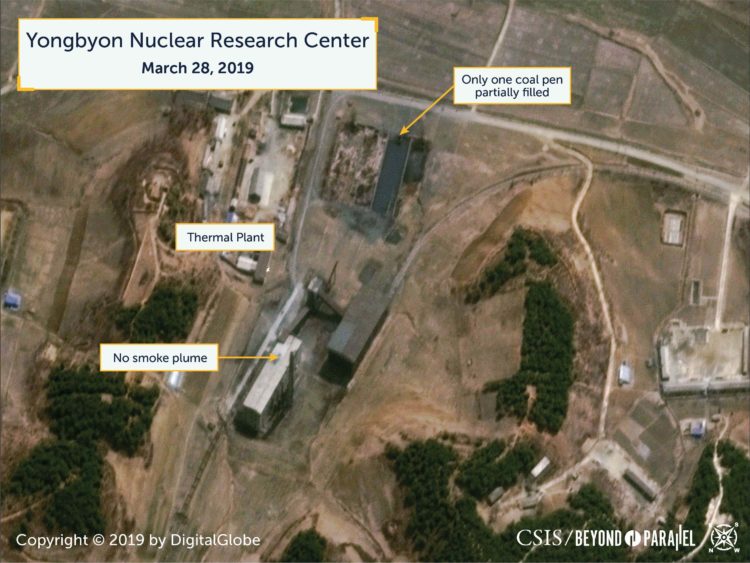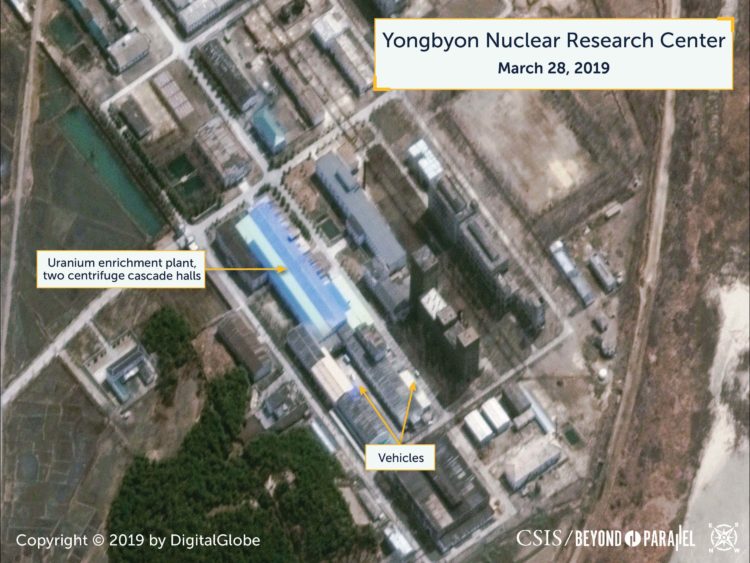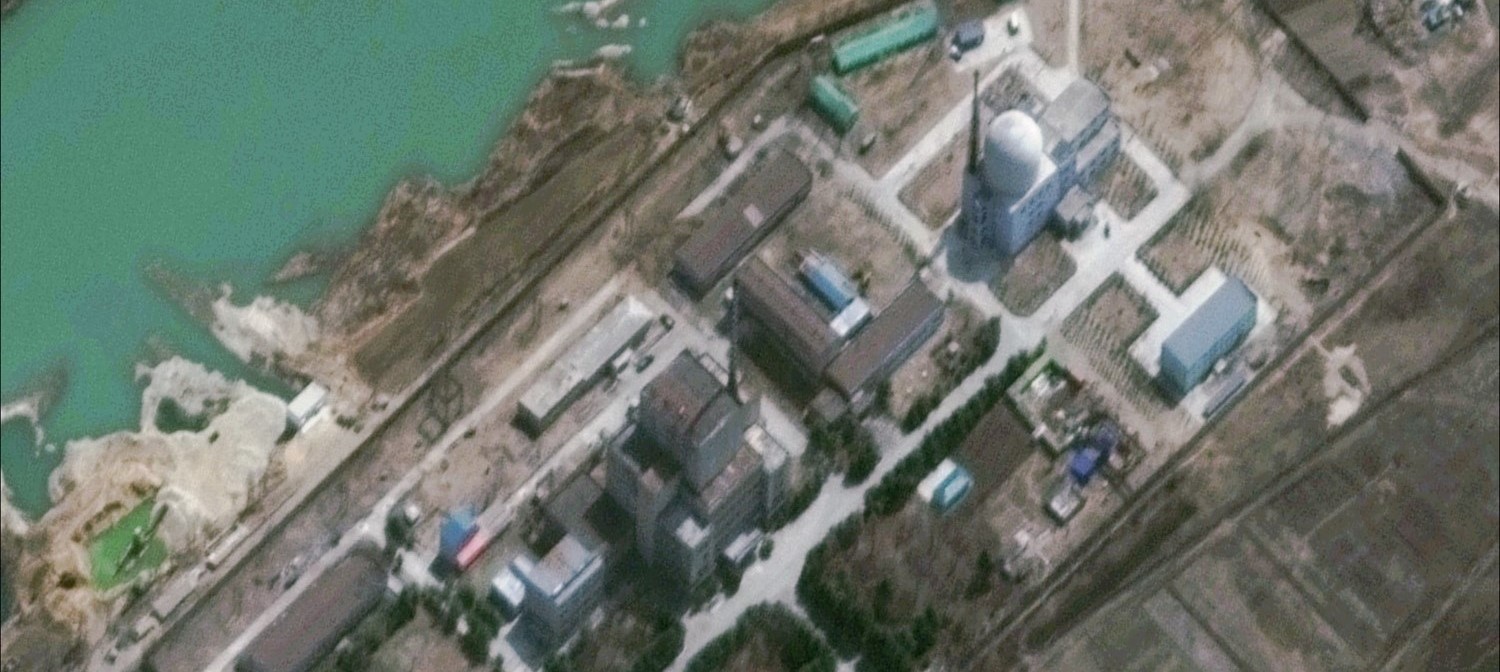
Yongbyon Nuclear Complex: Normal Operations with Low Level Activity
Key Findings
- Beyond Parallel datasets have found that North Korea will engage in provocative acts on average within five months of the breakdown of bilateral diplomacy with the United States. While bilateral denuclearization talks have not ended after the Hanoi summit, North Korea has retreated into a shell and been unresponsive to entreaties to continue working-level talks. With this in mind, Beyond Parallel has tracked imagery of the Yongbyon nuclear complex.
- Commercial satellite images of North Korea’s Yongbyon Nuclear Research Facility acquired on March 28, 2019 show that normal operations are ongoing with a low level of activity throughout the complex.
- IRT-DPRK Reactor: No activity of significance is observed at the reactor on the north side of the Yongbyon complex.
- 5 MWe and ELWR reactors: No signs of operations despite the presence of vehicle activity around the facilities.
- Kuryong River Dam: Spring snowmelt and runoff have raised the level of the Kuryong-gang to the point that it is overflowing the earthen dam adjacent to the 5 MWe and Experimental Light Water (ELWR) reactors in several locations. There have been past instances of overflow, but the concern here is that if the water level rises too quickly it may cause a significant breach that could quickly expand and erode major sections of the dam.
- Radiochemistry Laboratory: No activity of significance seen in the either the laboratory’s stacks or cooling buildings or at the thermal plant to the east of this structure.
- Uranium Enrichment Plant: No significant activity is observed at the Uranium Enrichment Plant and its two centrifuge cascade buildings.
IRT-DPRK, 5 MWe, and ELWR Reactors
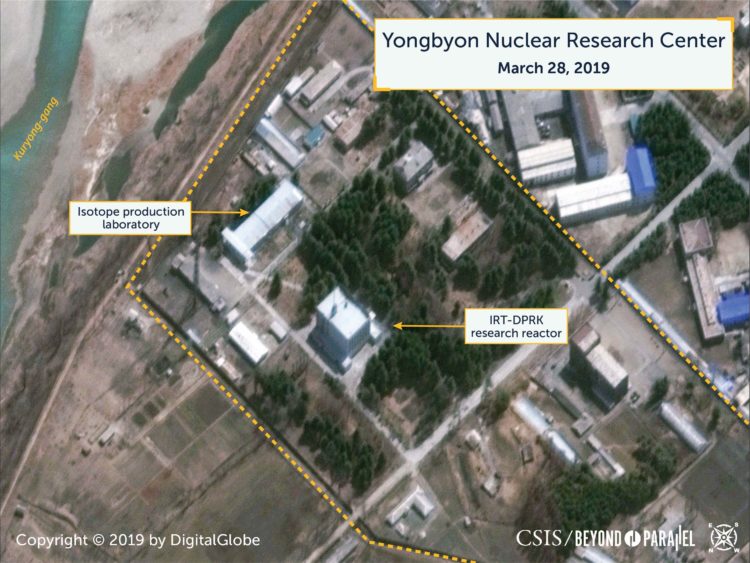

No activity of significance is observed at the IRT-DPRK reactor on the north side of the Yongbyon complex.
Although vehicle activity is observed around both the 5 MWe and ELWR reactors, there are no visible indications (e.g., steam rising from the turbine building, distinctive waterflow patterns from the pumphouses, etc.) that either of them is currently in operation. The areas around the reactor engineering office building and the ELWR have been landscaped during the past two months suggesting that all major construction work has been completed.
The work on the north pumphouse and the channel leading to it observed in January and February imagery appears to be complete. Dredging operations immediately upstream of the pumphouse, however, continues. Such activity, although normal for this section of the river, would likely present challenges to cooling water filtration during reactor operations.
Kuryong-gang Dam
This earthen dam was built to raise the level of the river during the summer, fall and winter months to increase the water supply to the pumphouses that provides cooling water for the reactors. Spring runoff has been observed to overflow the dam on several occasions in the past and North Koreans have conducted repairs as needed. The concern here is that if the water level rises too quickly it may cause a significant breach that could quickly expand and erode major sections of the dam. This, in turn, could appreciably degrade the quantity of cooling available to the reactors.
Dredging operations for gravel and sand are observed both upstream and downstream of the dam. Such activities are normal for this section of the Kuryong-gang and have been ongoing for many years.
Radiochemistry Laboratory
The only activity of note observed at the Radiochemistry Laboratory in the latest satellite image is the presence of what appears to be five trucks and other vehicles in the vehicle maintenance area. A small number (two-seven) of vehicles are often present here. No plumes are observed from any of the laboratory’s stacks or cooling buildings.
Immediately east of the Radiochemistry Laboratory
Rail Yard and Isotope/Tritium Production Facility

No activity of significance is observed at either the rail yard or isotope/tritium production facility. No rail cars are present in the rail yard.
Uranium Enrichment Plant
No significant activity is observed at the uranium enrichment plant and its two centrifuge cascade buildings although two vehicles are present. Such activity may support the report that the ROK National Intelligence Service informed the National Assembly that “…North Korea appears to be keeping its uranium enrichment facility in its mainstay nuclear complex in Yongbyon, north of Pyongyang, in ‘normal operation’.”1
References
- “N.K. almost completes work to restore long-range rocket launch site,” Yonhap News Agency, March 29, 2019, https://en.yna.co.kr/view/AEN20190329008252315?section=national/politics. ↩


